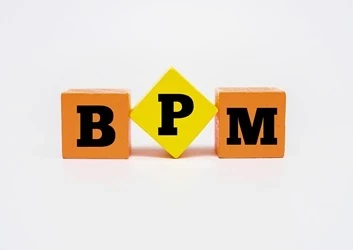The reality of too many businesses is that pressure to get results can override good judgment. Part II of this week’s Deming Files examines the Deepwater Horizon disaster and argues that commonly-accepted but faulty management practices can lead to disaster.
In Part I of this two-part column we examined a process by which to increase worker safety and oil rig reliability. We started the process via the lens provided by Eliyahu M. Goldratt in his Theory of Constraints.
We wrote about Goldratt’s emphasis on starting with the biggest constraint, first, and then working on the next most impactful and the next, and so forth. Doing so is essential to error-proofing the entire system effectively and with efficiency. In Part I we asked you to visualize a system of thousands of dominos, standing on end and in lines –some of which are intertwined. The dominos are standing on a platter underneath a glass dome –to which pressure can be added. The goal is to keep the dominos from falling.
The 380-page Report by the National Commission (NC) on the BP Deepwater Oil Spill includes a myriad of suggestions to tackle the issues and constraints. We noticed there were several significant systemic constraints not addressed; constraints which have the power to destabilize worker safety and rig reliability.
We now take a closer look via a lens provided by Dr. W. Edwards Deming. This will help us identify constraints which put pressure on the dominos in the real world of offshore drilling. As we review this lens, please keep three practical questions in mind:
- Does offshore oil rig drilling lack a theory of management that is consistent with what needs to be done to assure worker safety and rig reliability?
- Does the present theory of management in use actually create pressures that destabilize the entire system?
- Does the present theory of management in your organization create pressures that are harming your organization?
Note: Would a technical analysis (based on questions Dr. Deming might ask) be worthwhile in an effort to increase worker safety and rig reliability? The answer is: of course, and such an analysis might delve into: whether there were special circumstances occurring; data from comparable situations; statistical studies, and the like.
Our purpose here, however, is to delve into the lesser known aspects of Deming’s New Philosophy of Management, rather than into the technical expertise Dr. Deming is perhaps better known for.
Lens: Systems Thinking vs. Destruction of a System
Deming was one of the early proponents of systems thinking and he defined systems thinking in ways that brought the concept to life:
- "A system is a network of interdependent components that work together to try to accomplish the aim of the system. A system must have an aim." The aim is not numerical, nor is it related merely to quarterly reporting of profit or loss. Management’s job is to understand the interrelationships, the holistic interconnections, and to direct all the efforts of the components toward the aim of the system.
- Typically, when left to themselves (and not managed by leaders who have a systems view and understanding) the "components become selfish, competitive, independent profit centers and thus destroy the system." The pressure to get results can undermine thoughtfulness.
Deming described the "Forces of Destruction of a System" and several "Deadly Diseases."
Here is a sampling of them:
- The Merit System in which people, groups, and divisions are forced to compete with one another. This is a constraint which skews behaviors, decisions and actions toward optimizing the results of any given group, while sub-optimizing the results of the overall system. The typical merit pay system destabilizes many dominos throughout the organization.
- Incentive Pay and Pay-For-Performance. This pressure places emphasis on short-term results, and causes people to put-off the important efforts that won’t get recognition and reward in the short term. Obviously, this results in delaying (or hiding) bad news, maintenance, training, and the like, which in turn destabilizes the dominos associated with safety and reliability –and makes those dominos more likely to wobble and fall.
- Numerical goals without a method. "Management by visible figures alone" fools managers into thinking that if the numbers are good, then the system must be good. Alas, how the numbers are achieved remains unexamined –and that is a problem. As Dr. Brian Joiner pointed out, there are only 3 ways to get better numbers: improve the capability of the system, manipulate the system, or manipulate the numbers. Management by numerical goals and quotas without having an insightful systemic view and appropriate methods is likely to cause manipulation rather than improvement. Manipulation makes the dominos unsteady throughout the system.
The above ways to manage are commonly found in the prevailing theory of management in use in many organizations. Those ways of managing can create a climate for ongoing problems with safety and reliability –and, of course, harm and contribute to the destruction of other aspects of the system, as well
For example:
- Is the aim of the present system to achieve safety and reliability in ways that also will foster profits? Some people might argue that safety and reliability are "overhead" and are at odds with profit making. Keep in mind it was once believed the same was true with quality and profit making –that to improve quality you had to increase costs. Deming proved that by improving quality (by using the proper management methods and related tools) you could actually reduce costs and overhead.
- Does the present theory of management create destabilizing pressures because it uses numerical goals (without methods), quotas, incentive pay, pay-for-performance, merit systems, and internal competition? Deming wrote that it is "incompatible" to have "rewards that recognize superior performance, innovation, extraordinary care and commitment." [Interestingly, the Deepwater crew had received a visit from corporate chiefs to applaud their safety record just a few hours before the explosion.]
We asked you to keep three practical questions in mind:
- Does offshore oil rig drilling lack a theory of management that is consistent with what needs to be done to assure worker safety and rig reliability?
- Does the present theory of management in use actually create pressures that destabilize the entire system?
- Does the present theory of management in your organization create pressures that are harming your organization?
Based on Deming’s lens, we believe the answer to questions one and two is "yes." As for question three, if your present management methods include the Forces of Destruction or Deadly Diseases, then the answer would be "yes," as well.
Considering that if the present theory of management (and its practices of merit pay, pay-for-performance, numerical goals without methods and the like) is inadequate to achieve the aim of safety and reliability while making profit, then the time is now to re-examine and replace the present theory of management by using Deming’s recommendations for removing the Forces of Destruction caused by status-quo management philosophies.
In fact, Deming’s management method is essential if one is to be effective in using Goldratt’s methods to break the constraints on safety and reliability.
In the case of the fallout on the Deepwater Horizon disaster our overriding concerns are: First, that the focus will be on strengthening individual dominos – while the pressures from faulty management beliefs and practices go unexamined. Second, that the result of overlooking these faulty management beliefs will result in higher costs, needless "red tape," lost profits, and a false sense of security which could lead to future disasters and evermore costly fixes that will fail. Finally, without an explicit and known theory of management as defined by Deming, any improvement efforts are likely to be constrained and result in simplistic cause-effect driven behaviors. Though well-intentioned, such overly simple cause-effect solutions will perpetuate the risks.
The harsh reality of too many businesses is that pressure to get results often overrides good judgment. The thinking is, "If we don’t get results damn soon and meet our quotas, we will lose our status, our career promotions, our bonuses, and perhaps even our jobs."
Many leaders think they know how to set numerical objectives and incentives without causing people to make bad decisions in the process of meeting the targets. Like Deming, we have never seen this target/incentive approach successfully sustained in pursuit of the "aim" of optimizing the overall organization. Indeed, the management pressure exerted via rewards if you meet targets (and punishments and threats if you don’t meet targets) certainly failed in terms of safety and rig reliability. (Financial Times, March 4, 2011.)
The NC Report identifies that the "decision-making process on the rig was excessively compartmentalized, so individuals on the rig frequently made critical decisions without fully appreciating just how essential the decisions were to well safety—singly and in combination."
We applaud this observation and want to point out that the Forces of Destruction and Deadly Diseases get in the way of systems thinking and effective decision-making. For example, when quotas come into play, people focus on the numbers rather than on meaningful results –and how to get them and sustain them.
The NC report recommends that robust processes and procedures must be put in place. Of course, but we must also ask, are such processes able to overcome the pressure and destructive nature of quotas, numerical goals, incentives, and the like which destabilize rational behavior, cause bad decisions, and undermine the aim of the system?
We have yet to see examples in which the unintended consequences (of such Forces of Destruction) did not do more harm than good. Typically, the unintended consequences that increase costs to the overall system are either hidden or are not recognized for what they are or how they came about. Nevertheless, once the systemic costs are examined and the unintended consequences identified, the destabilizing practices are shown to increase costs and reduce effectiveness. The Deepwater crew was about 3 weeks behind and $25,000,000 over budget. This pales in comparison with the eventual costs.
Can the work of Deming and Goldratt influence regulators, the NC, BP and others involved with off-shore drilling? We hope so. We also hope that other organizations in other industries will want to investigate Goldratt to remove the significant constraints that are holding them back, and investigate Deming’s management methods to identify the Forces of Destruction which are causing them harm.
Authors’ Note: for references and suggested readings from Deming and Goldratt, please send us an e-mail.
Editor’s Note: The columns published in THE DEMING FILES have been written under the Editorial Guidelines set by The W. Edwards Deming Institute. The Institute views these columns as opportunities to enhance, extend, and illustrate Dr. Deming’s theories. The authors have knowledge of Dr. Deming’s body of work, and the content of each column is the expression of each author’s interpretation of the subject matter.





















